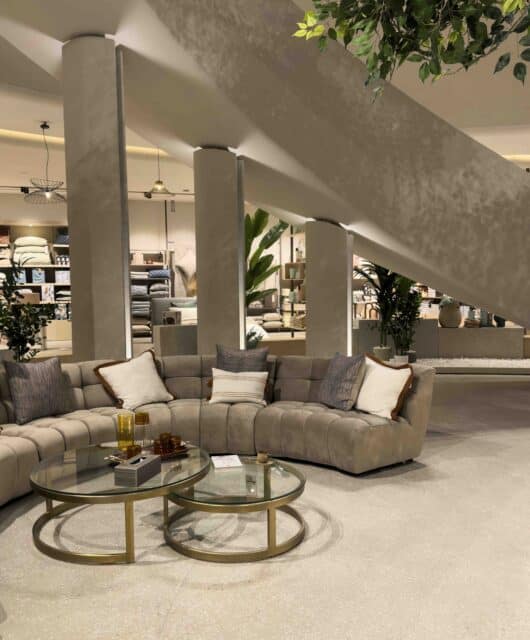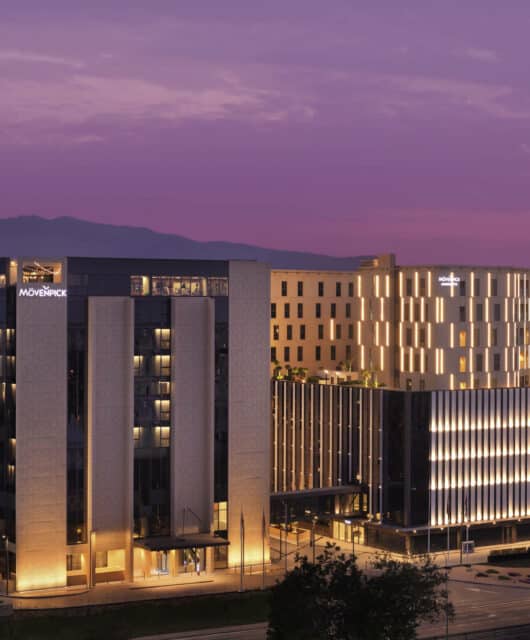AECOM warmly welcomes back Janus Rostock to lead U+P and Architecture in the Middle East & Africa
 Janus Rostock, a multi-award-winning architect and urban designer, has returned to AECOM as the Vice President & Regional Director for Urbanism+Planning and Architecture+Interiors, AECOM in the Middle East and Africa, with the goal of further elevating the local architecture brand.
Janus Rostock, a multi-award-winning architect and urban designer, has returned to AECOM as the Vice President & Regional Director for Urbanism+Planning and Architecture+Interiors, AECOM in the Middle East and Africa, with the goal of further elevating the local architecture brand.
With over 25 years’ architecture and urban design experience, Rostock’s unique Scandinavian design ethos and leadership style has transformed places and teams through his inclusive, engaging and human-centric design approach. He utilises evidence and data with an emphasis on co-creation, while always focusing on people, community and pedestrian eye-level experiences. His trademark is creating architecture and urban design that is place-specific, celebrating local culture and tradition whilst also looking to the future. “I have worked on some of the most transformative projects in this region from Greening Riyadh to Dubai Harbour, and in my opinion, these developments are to a scale that no other region can match. That is the unique aspect of the region. We have all these fantastic projects that can have a tangible impact on people, and this is what I try to instil in my team: to ensure we create a sense of place.
“If you look at many well-known places around the world, they have a certain sense of identity that’s unique to their location, from climate to culture, and it’s important to ensure that when we design, this is an integral part of what we do,” says Rostock.
If ‘consulting engineering’ and ‘architecture and design’ seem strange partners, it is one of the stereotypes about AECOM that Rostock hopes to break. He says: “As an inter-disciplinary and design driven company, this is what sets AECOM apart from its competitors. It’s such a key differentiator and allows us to deliver large-scale projects, but having the full control of all design elements – it is not often architects get the opportunity for this.
“When we talk about architecture and design, many assume design only happens at the concept stage, but to me design never stops, ‘god is in the detail’ and therefore good architecture is characterised by beautiful detailing. The region is seeing an increased focus on how our buildings are put together and how materials are meeting each other. We want to inspire our young architects that it’s not just the front-end where we focus, but being involved through all stages.”
Recently, Building Design ranked AECOM as one of the top five largest architecture practices in the world and Rostock looks forward to continue scaling up this practice line locally. Rostock’s team comprises 200 employees and is growing rapidly. He says: “We probably have one of the largest design teams in the Middle East right now.” The architecture and design side boasts an order book of three mega and five mid-size projects totalling around 1.6 million square meters under design at present. The mix “is a good spread” with 700 000 m2 retail to 300 000 m2 leisure and entertainment, 300 000 m2 hospitality and 100 000 m2 mixed-use developments. Projects range from early concept to mid-stage and complete, with 60% of work derived from Saudi Arabia and 40% from the United Arab Emirates.
After working at AECOM from 2018 to 2021, Rostock relocated back to his home country, Denmark, to work at a boutique architecture firm. “Two years later we were back in the Middle East,” he says. “I have been here since 2005, so quite a long period of my career has been in this part of the world.” Rostock also worked at Atkins for over a decade, a leading UK multinational engineering, design, planning, architectural design, project management, and consulting services company.
Commenting on the highly competitive market in the Middle East, Rostock notes on what continues to give AECOM a leading edge. He says: “It’s global reach. Many international competitors struggle with the pace. Europe is not set up for doing things as quickly as we do over here. We have successfully completed many projects, which really gives clients confidence in our capabilities. A client may ask if what is being proposed has been attempted anywhere else in the world, and we can invariably point to our work in the region.”
On the master planning side, the team has completed large-scale regional projects of 27000 km2, which is nearly the size of Belgium, all the way down to a community level and the more granular public realm, which considers ‘what it feels and looks like when you walk around in the public spaces between the buildings.’
As to his diverse portfolio, Rostock says architecture and design and urbanism and planning dovetail well together. Having experience in architecture practices and larger multidisciplinary companies, Rostock says architects tend to move into master planning when there is a lull in construction projects. “When the market picks up again, they leave it to the real master planners to do.”
As an architect, Rostock says it is important to distinguish between master plans and building designs as objects. “Master planning is looking at the spaces between the buildings. Is everything connected? There are some good examples of master plans and buildings coming together and becoming unique, and Dubai Opera is a perfect example, where AECOM proudly worked on the landscape design delivery of the Opera District.”
In terms of sustainability, Rostock says such concerns are best addressed by a multidisciplinary company like AECOM. “In today’s world where we want to build more sustainably, it is incredibly important to have all these disciplines in-house to collaborate on the best solutions for our clients. Multidisciplinary organisations are the best at delivering that, especially with projects of this scale. We also advise in the social, environmental and governance space, creating a holistic approach to design advisory,” says Rostock.
He concludes: “The level of ambition in this part of the world has always been high. The demands in terms of getting things built has always been incredibly challenging, but that is also what makes it so exciting. When I compare my portfolio to my peers in Europe, the number of projects is mindboggling. There are so many projects out there we were involved with that are now finished and up and running and having people living in them. In that sense, it is super rewarding.”







